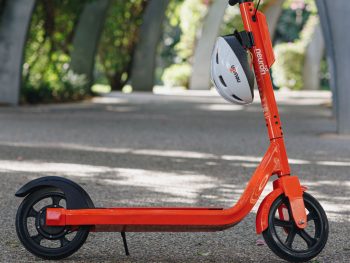e-scooters five times safer than bicycles, finds RoSPA report
A new study which finds that e-scooters are significantly less risky than many other forms of transport on Britain’s roads has launched today from accident prevention charity RoSPA.

The study on e-scooters found bicycles were five times more likely to be involved in a collision and motorcycle collisions were nine times higher
Published as the Government announces that new legislation allowing private e-scooter use on public roads could be included in the upcoming Queen’s Speech, the report evaluated UK e-scooter incident rates in comparison to other forms of transport including bicycles and motorcycles
The study, carried out in partnership with e-scooter operator Neuron Mobility on the back of the 2020 launch of official shared e-scooter trials, showed that e-scooter collision rates were significantly lower with only 0.66 per million miles travelled; in comparison bicycles were five times more likely to be involved in a collision and motorcycle collisions were nine times higher.
The report, which covers data gathered by the Department for Transport (DfT) and provided by Neuron for the 2020 period, also found that where incidents did occur on e-scooters, the overwhelming majority of them (94%) took place in local authority areas that were not operating an e-scooter trial. This highlights that, so far, the UK’s shared e-scooter trials have proven to be remarkably safe.
Although private e-scooters are outlawed, over 50 towns and cities have been granted permission to run trials for shared e-scooters approved by the DfT, which are subject to a range of safety requirements including geofencing control and insurance
The shared e-scooter schemes tend to feature a range of safety innovations and stricter rules and regulations when compared to privately owned e-scooters which are currently illegal for use on public land.
Almost all incidents analysed as part of the study were confirmed to have taken place on the roads (94%), mostly on unsegregated single carriageways, and the vast majority involved a collision between an e-scooter and a larger powered vehicle, such as a car, truck or lorry. The majority of collisions happened during daylight hours, between 2pm and 7pm, with peaks at 3pm and 6pm. Men (77%) were far more likely to be involved than women.
Based on these findings, the report makes a set of recommendations to improve the safety of e-scooters, including further investment in road design improvements, such as segregated bike and e-scooter lanes, mandatory training on the Highway Code and the practical operation of e-scooters for all users, and awareness and training on e-scooter behaviour for other road users.
Nathan Davies, executive head of policy and portfolio at RoSPA, said: “e-scooters are clearly set to be a long-term feature of our transport mix and it’s of pressing importance that we understand their impact on road safety and how they can be made safe for everyone to use.
“This report shows that e-scooters compare favourably to other kinds of vehicles and do not represent any greater safety risk to other road users and pedestrians. However, there is still a lot of work that needs to be done to ensure they are integrated on our highways and make sure both e-scooter riders and cyclists are offered greater protections from motor vehicles, which were the source of the vast majority of incidents.”
To access the RoSPA and Neuron Mobility report, click here.












